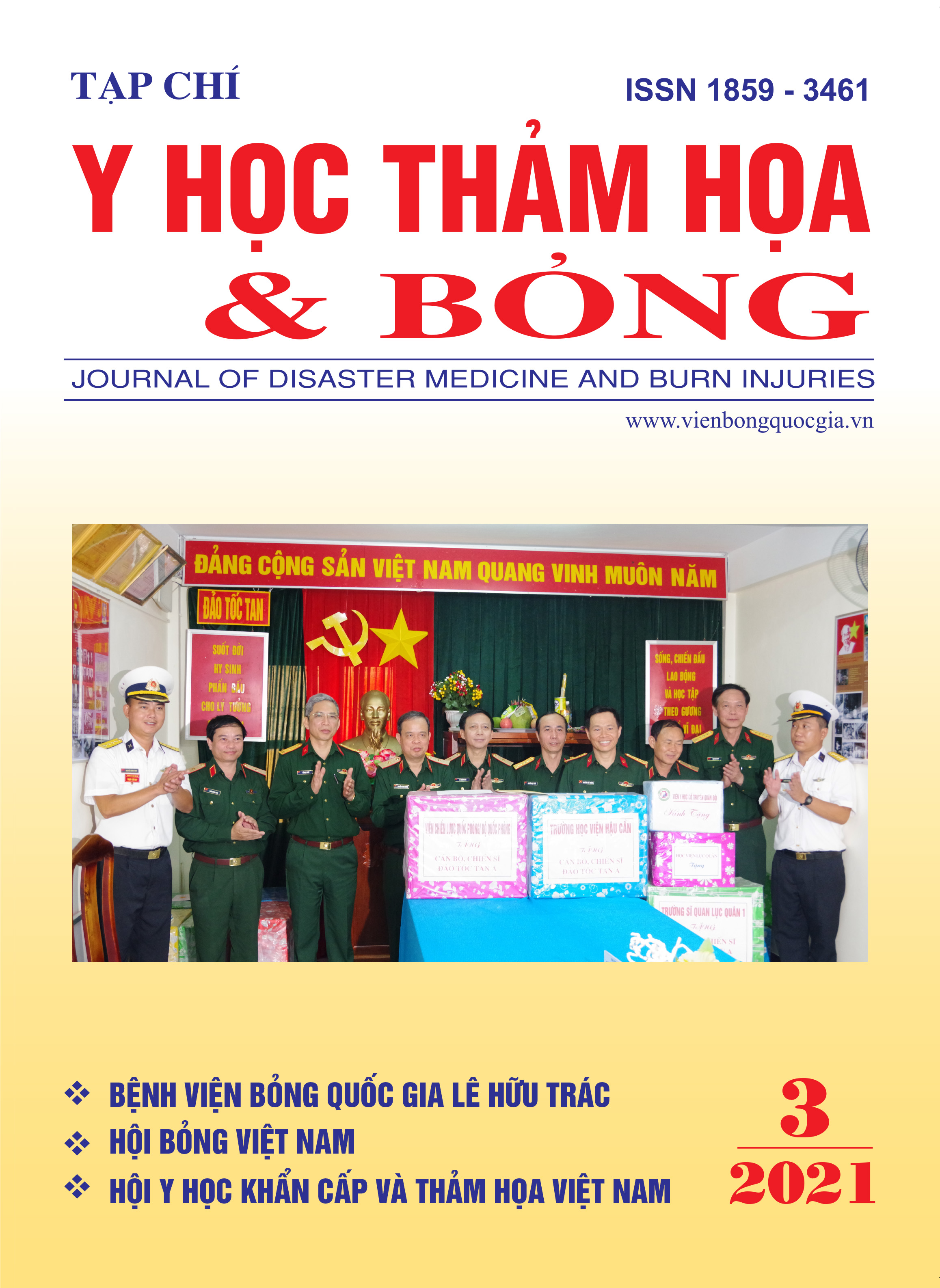Assessment of training program results for nurses at the Viet Nam - Cu Ba Friendship Hospital in 2020
Main Article Content
Abstract
Objective: To evaluate the efficacy of the training program for nurses at the Vietnam - Cu Ba Friendship Hospital in 2020.
Subjects and methods: A prospective, descriptive study made in 60 nurses at the Vietnam - Cu Ba Friendship Hospital from August 2020 to November 2020. The nurses before and after the training program must answer a set of multiple-choice questions with 86 questions divided into 4 parts. The nurses with the percentage of correct answers < 60%, 60 - 79% and ≥ 80% in each section will get average, good and excellent scores,respectively.
Results: After the training, the percentage of nurses had excellent scores in the part 1 (88.33%), the part 2 (10%), the part 3 (34.5%), the part 4 (40%), respectively compared to before training were 4.84%; 0%; 0%; 0%. After the training, the percentage of nurses who had good scores in part 1 (5%), part 2 (20%), part 3 (41.4%), the part 4 (50%), respectively compared to before the training was 24.19%; 9%; 9.7%; 0%. After the training, the percentage of nurses who had average scores in part 1 (7%), part 2 (70%), part 3 (24.1%), the part 4 (10%), respectively compared to before the training was 70.97%; 91%; 90.3%; 100%.
Conclusion: The training program for nurses at the Vietnam - Cuba Friendship Hospital in 2020 showed significant efficacy, contributing to the improvement of the quality of patient care with the result after the training, the percentage of nurses got the excellent score at the part of the knowledge of assessment and planning of patient care (88.33%), the part of improving nursing capacity in the operating room (10%), the part of the skill of using a peripheral catheter (34.5%), the part of the skills of surveillance and problem solving for the head nurse (40%), respectively higher than before the training were 4.84%; 0%; 0%; 0%.
Article Details
Keywords
Nurse, training
References
2. Bộ Y tế (2013), Hướng dẫn đào tạo liên tục cho cán bộ Y tế, 22/2013/TT-BYT.
3. Phan Thi Dung, Le Thi Trang, Ha Huu Tung (2020), Nurses’ Knowledge, Practice, and Confidence after the Training Program on Wound Care at the Agriculture General Hospital in Vietnam, Open Journal of Nursing 10: 646-656.
4. Nguyễn Thị Huế và cộng sự, Kiến thức và thái độ về phòng ngừa nhiễm khuẩn vết mổ, phòng ngừa nhiễm khuẩn tiết niệu, vệ sinh tay của điều dưỡng lại một số khoa lâm sàng hệ ngoại Bệnh viện Đa khoa tỉnh Hải Dương, Tạp chí Điều dưỡng Việt Nam. 26, 100-106.
5. Bộ Y tế (2012), Hướng dẫn phòng ngừa nhiễm khuẩn vết mổ, Quyết định số: 3671/QĐ-BYT ngày 27 tháng 9 năm 2012.
6. Ngô Thị Huyền (2012), Đánh giá thực hành chăm sóc vết thương và tìm hiểu một số yếu tố liên qua tại bệnh viện Việt Đức năm 2012, Tạp chí y học thực hành số 1.
7. Nguyễn Văn Chung, Nguyễn Văn Hoàn (2018), Thực trạng kiến thức và thực hành vệ sinh tay của nhân viên y tế khối ngoại Bệnh viện Quân Y 110 năm 2018, Tạp chí Điều dưỡng Việt Nam, 24 , 76-80.
8. Phan Thi Dung et al. (2017), Effectiveness of Training Programme on Nurses’ Wound Care Competencies after One Year of Implementation. The THAI Journal of SURGERY 38:140-146


